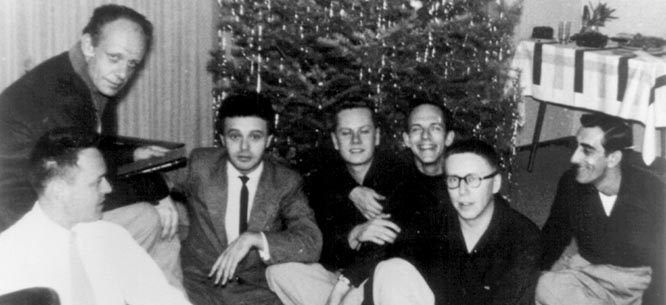Gay Rights Before Stonewall
Gay Rights Before Stonewall

With all the attention gay rights is receiving, you would think smart journalists for major newspapers would be able to provide an accurate account of how this now potent movement got going. Alas, you would be wrong.
Last week, both the New York Times and the Washington Post ran pieces that assumed the genesis of the gay freedom campaign can be traced to a single dramatic event with a singularly memorable name: Stonewall. In the Times, John Harwood contrasted the black and feminist movements whose history goes back long before the Civil War with “the modern fight for gay rights” which he believes is “less than a half-century old, dating from the 1969 Stonewall uprising in New York.” In the Post, Greg Sargent agreed and added a personal note: “I grew up about a half a mile away from the birthplace of the gay rights movement—the site of the Stonewall uprising, in Greenwich Village.”
Now, that battle in June 1969 between gay men and the police who had raided the Stonewall Inn did give the cause a big jolt of visibility—at a time when militant protest had become common on streets and college campuses. It was certainly the only riot of the era to include a Rockettes-style chorus line of drag queens who kicked their heels in the air and sang, “We are the Stonewall girls/We wear our hair in curls/We wear no underwear/We show our pubic hair.”
But nearly two decades of patient, determined public activism had set the stage for that flamboyant, now famous event. In 1951, Harry Hay, Jr., a Los Angeles actor who was then a member of the Communist Party, founded the Mattachine Society, a gay men’s group that took its name from a group of masked fools in medieval France. Four years later, Phyllis Martin and Phyllis Lyon launched the Daughters of Bilitis, a lesbian rights organization named after a fictional poet who lived alongside Sappho in ancient Greece. The purposely obscure titles of these groups didn’t prevent them from publishing monthly magazines, spawning local chapters, hosting lectures, and urging politicians to repeal laws that made it easy to dismiss homosexuals as “security risks.”
At the same time, a courageous scientist named Frank Kameny was becoming the Rosa Parks of the burgeoning “homophile” movement. In 1957, Kameny, a Second World War veteran and Harvard PhD, lost his job as an astronomer at the Army Map Service in Washington after police arrested him for cruising in Lafayette Park, right across from the White House. Unlike countless other gay men and lesbians who got fired after their orientation was revealed, Kameny decided to fight back. He took his case all the way to the Supreme Court, which, in 1961, declined to hear it. Then Kameny led his fellow D.C. members of the Mattachine Society to confront psychiatrists who insisted on labeling homosexuality as an illness. In 1965, they picketed the White House, where Lyndon Johnson was celebrating passage of the Voting Rights Act, with hand-lettered signs that read, “Full Citizenship for Homosexuals.”
Historians of gay life—such as George Chauncey, Allen Berube, and Lillian Faderman—argue that the movement for equal rights sprouted from a culture increasingly open to sexual frankness and adventure. In the 1920s, openly gay characters appeared in numerous Broadway plays; in the early ’30s, drag balls attracted thousands to such venues as Madison Square Garden. During the Second World War, homosexuals stationed far from home, often for years at a time, felt freer to fulfill their desires, even as the military sought to punish them for doing so.
At one point, General Dwight Eisenhower demanded that the Women’s Army Corps (the WACs) ferret out lesbians from its ranks. One WAC sergeant responded, “If the General pleases I will be happy to do this investigation…But, sir, it would be unfair of me not to tell you, my name is going to head the list…You should also be aware that you’re going to have to replace all the file clerks, the section heads, most of the commanders, and the motor pool.”* One can only understand the advances the gay movement has achieved—like those won earlier by its black, feminist, and labor counterparts—if one appreciates the social environment that produced it.
Perhaps it is unfair to expect reporters on deadline to pay attention to such long-term historical changes. But they and their editors do know how to use a search engine. On Wikipedia, they could quickly learn that Frank Kameny sat in the front row as Barack Obama signed the repeal of Don’t Ask, Don’t Tell. And, just off Dupont Circle, barely a mile from the headquarters of the Post and the Washington bureau of the Times sits a block that, in 2010, the D.C. government proudly renamed Frank Kameny Way.
Cross-posted from the New Republic.
Michael Kazin is the co-editor of Dissent.
*This exchange is quoted in Lillian Faderman’s Odd Girls and Twilight Lovers: A History of Lesbian Life in Twentieth-Century America (New York, 1991), 118.






